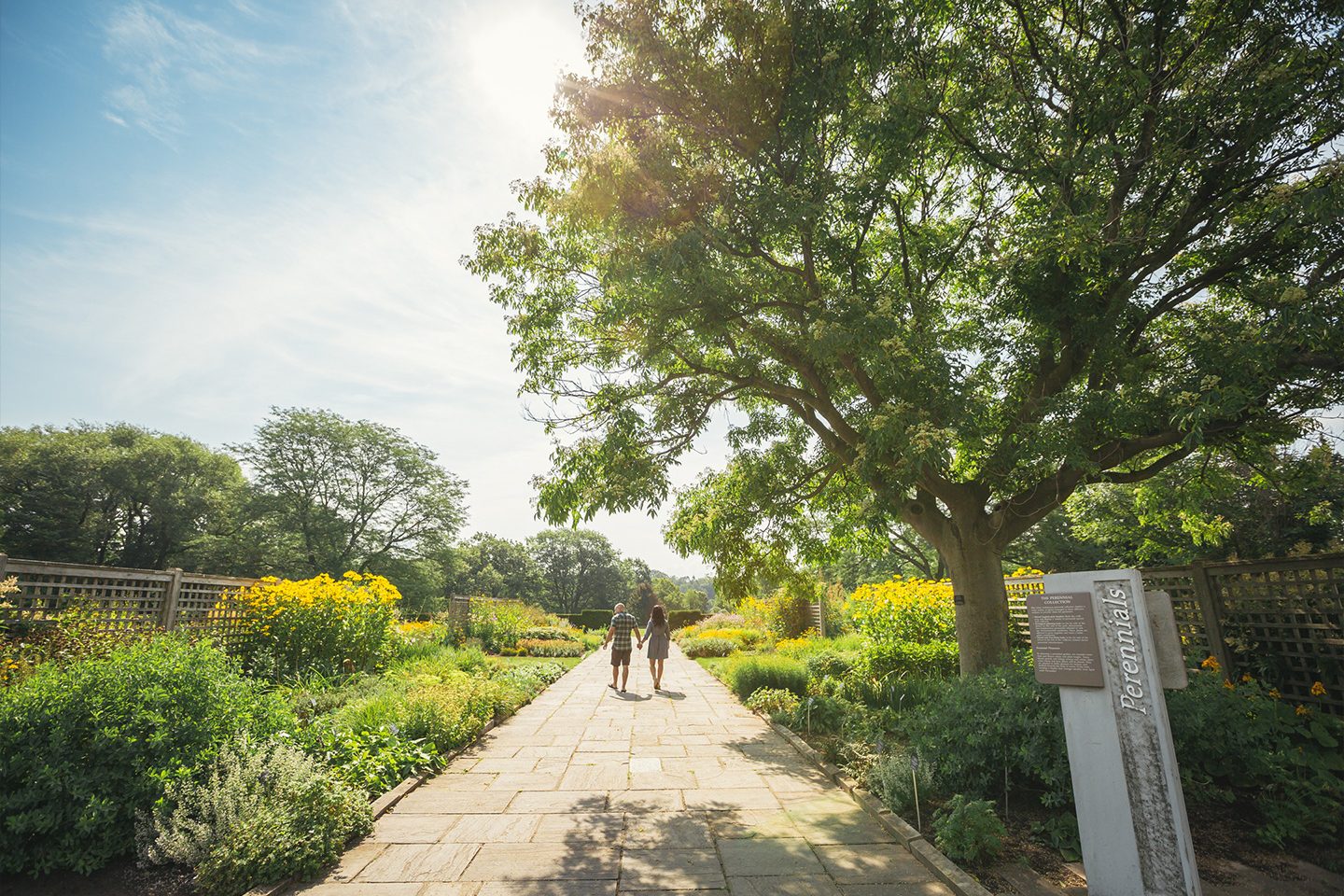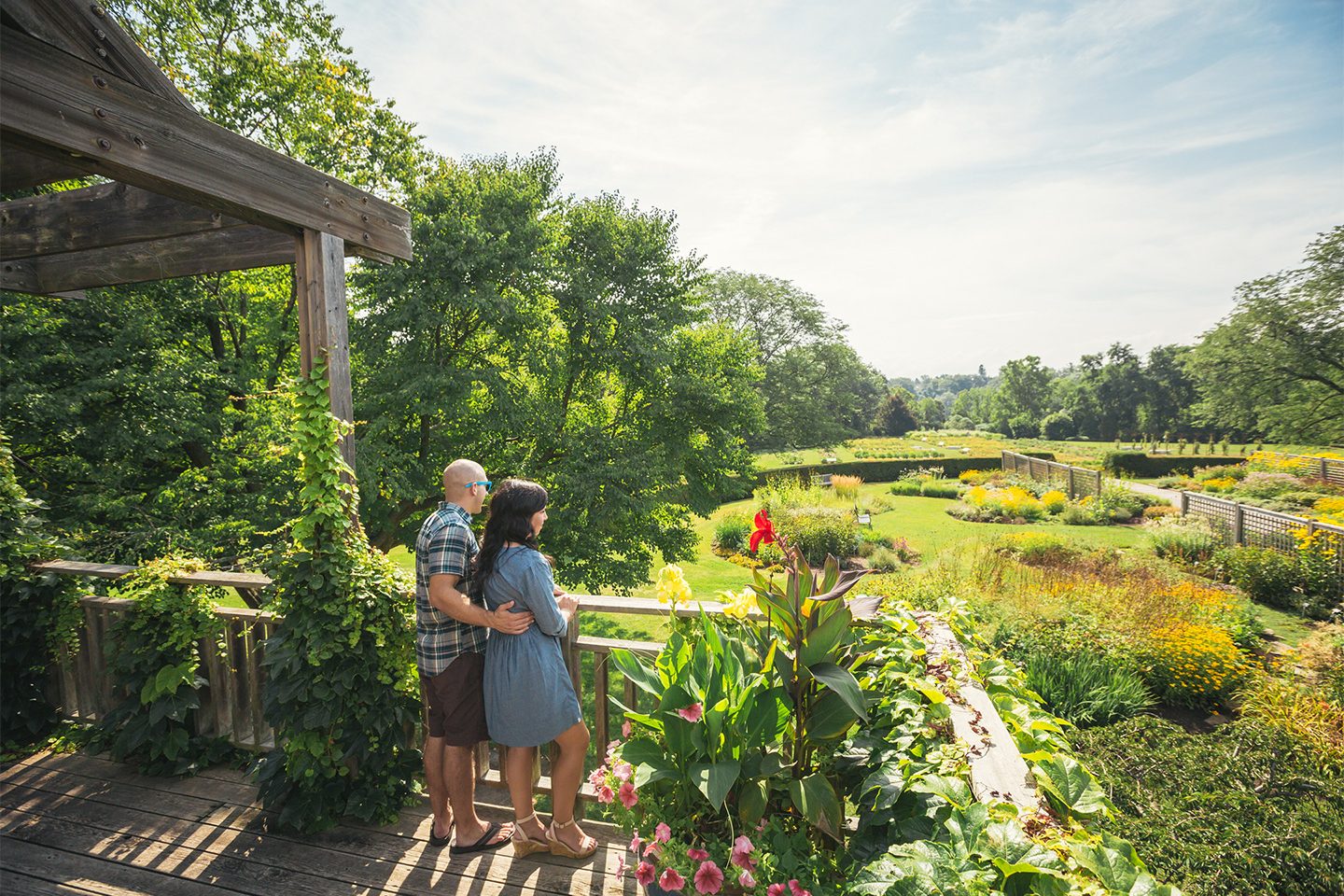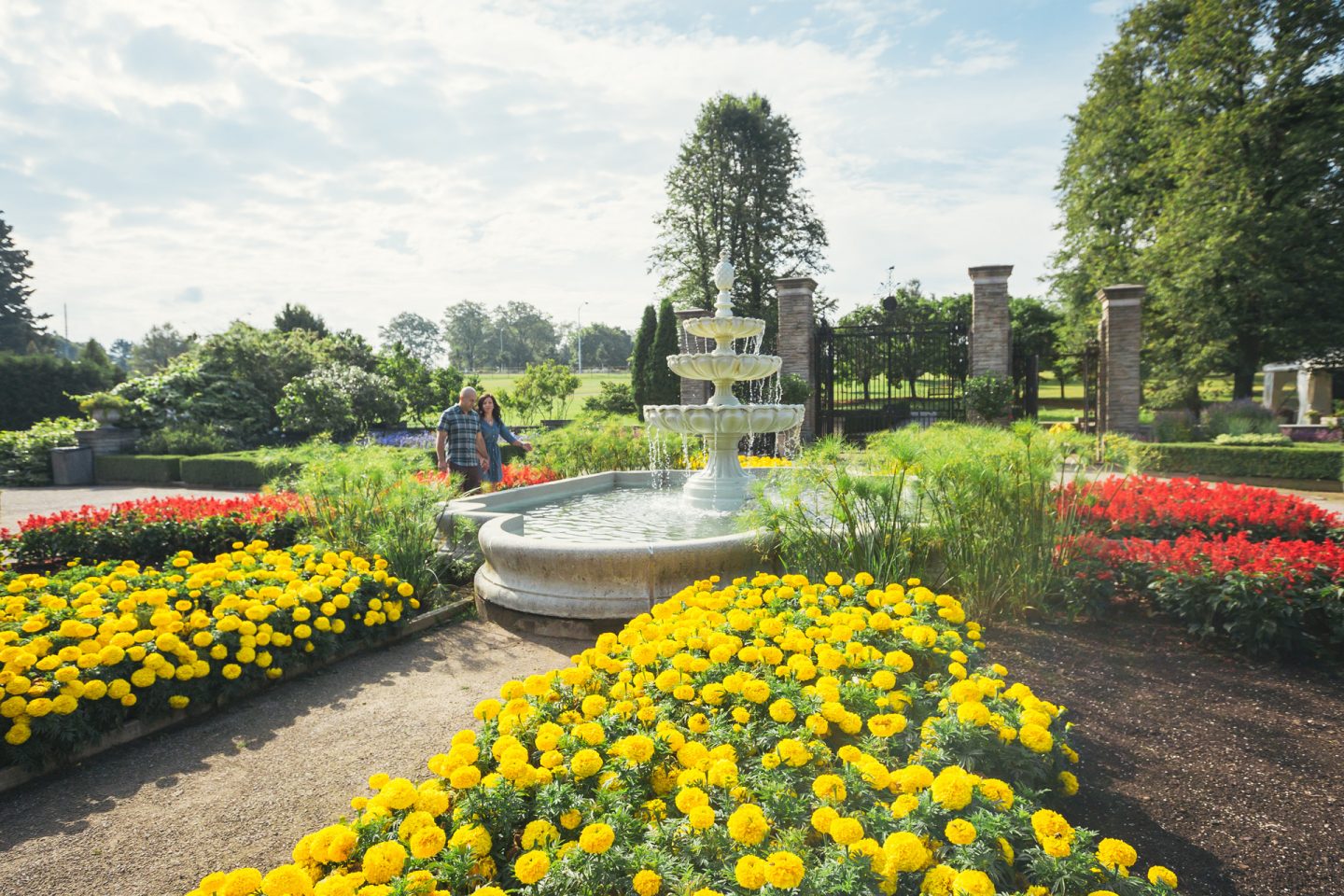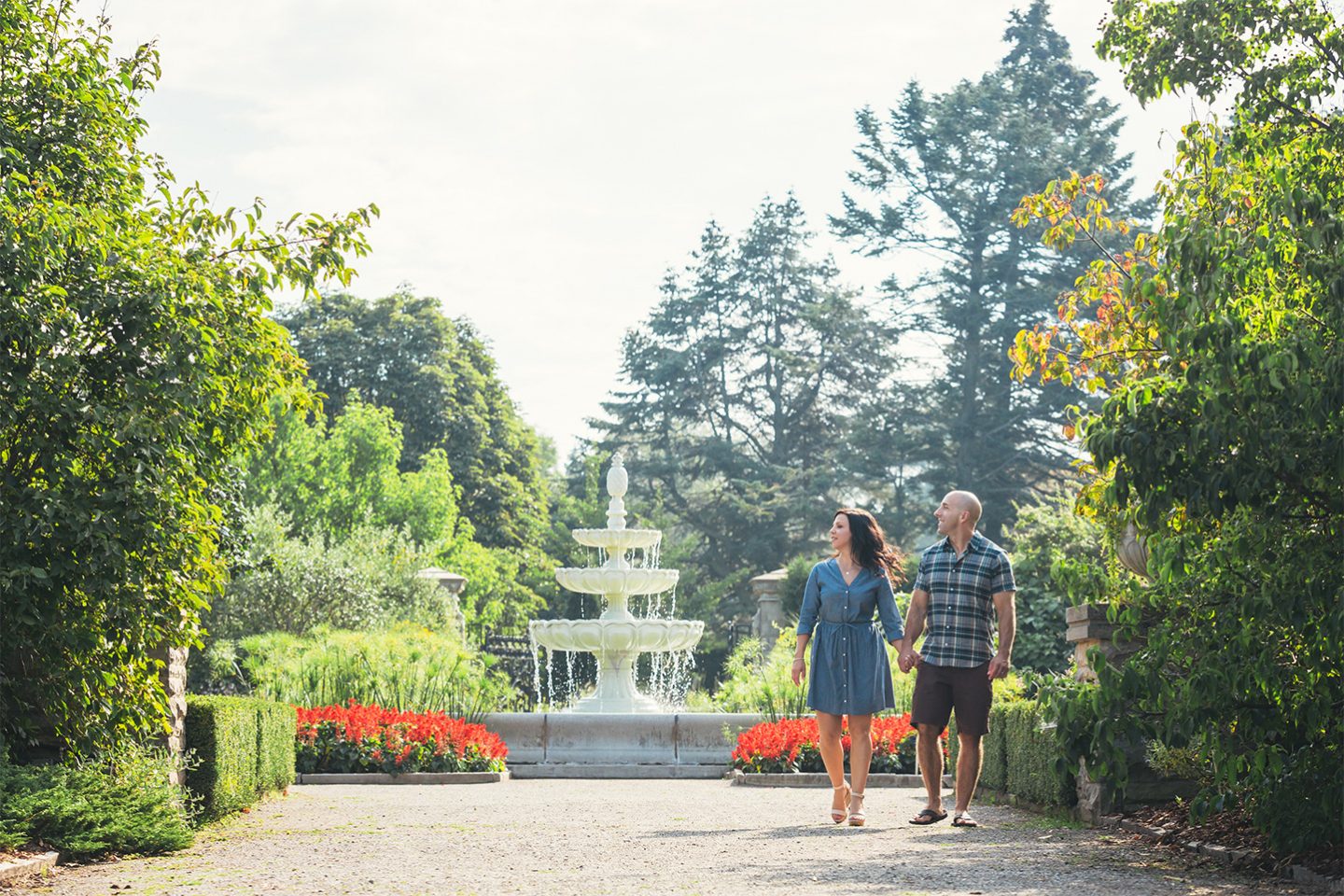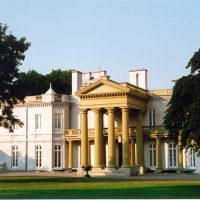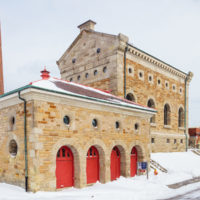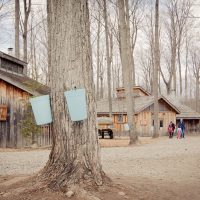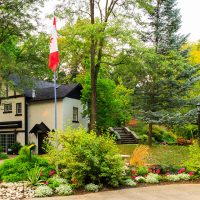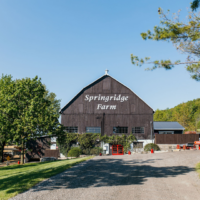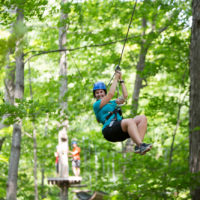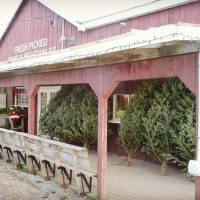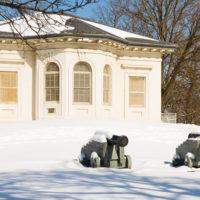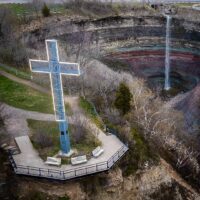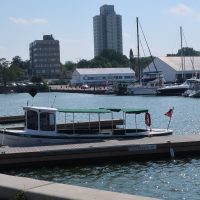For over 80 years Royal Botanical Gardens (RBG) has been an ecological jewel at the western tip of Lake Ontario. Conceived and founded through the tireless efforts of early conservationist Thomas Baker McQuesten, RBG lands were set aside to create the region’s first botanical garden. Patterned after Kew Gardens in England, RBG was created to serve as both a regional botanical tourism site and an environmental agency.
At 2,700 acres (1100 hectares), Royal Botanical Gardens is the largest botanical garden in Canada and one of the largest in the world. Within its 60 documented collections approximately 40,000 plants are displayed in five major garden exhibition areas; the Arboretum, Hendrie Park, Laking Garden, RBG Centre and the Rock Garden.
RBG’s Arboretum is more like an English landscape park than a garden. As its name implies, this is the place where you can see a wide variety of trees and other woody plants up close. It is especially beautiful in spring and fall. Two Arboretum landmarks are Rasberry House, named for the family that operated a market garden and dairy farm on this site for nearly 100 years, and its adjacent silo. The handsome old house, which sits up on the hill to the north, now serves as headquarters for the Bruce Trail Association. The Arboretum is large, and with exception of the lilac walk and the shrub collection areas, has few formal paths. It is also a great place for watching and experiencing other animal plant interactions.
Hendrie Park has something for everyone. Meandering through its collections, displays and interesting landscape features, the visitor can smell a rose or be challenged by the thought provoking stories in the medicinal garden. This garden truly illustrates the diversity of both plants and garden design. Discover native plants in a cultivated setting, a new look at vegetable gardening and the see the sky reflected on dark water.
Set on a fertile terraced plain, formerly a market garden, Laking Garden is home to RBG’s herbaceous perennial collections. The belvedere at the end of the path offers a panoramic view over the entire garden. This garden, overlooked by a small cottage offers the visitor an insight into the depth and breadth of perennial plants. Visitors in June should watch their step, as turtles will likely be nesting in the fertile soil of the lower terrace.
The year round focal point of Royal Botanical Gardens is RBG Centre. Here you will find both indoor and outdoor displays along with the administrative offices of the institution. Orient yourself to the property in Stedman Exploration Hall, stop by the Mediterranean Garden and explore a living wall in the Camilla and Peter Dalglish Atrium. Access Hendrie Park through an underground tunnel to continue your exploration of the plant world.
Built in 1930-31 on the site of an abandoned gravel pit, the 2.43-hectare (6-acre) Rock Garden was RBG’s first major display garden. Before its transformation, the surrounding area was littered with billboards and old shacks. As part of a make-work beautification project during the Depression, tons of weathered limestone rocks were brought in from nearby quarries to create the garden’s structure and its charming, irregular network of staircases, linked ponds, bridges, and waterfalls. Decades later, the rocks look as though they’ve been in place forever. This garden amphitheatre is a magical place, exuding an atmosphere of both tranquility and mystery.
The RBG now has The International Sculpture Collection, which is a permanent collection located in Hendrie Park. The collection was created by founding donor Dan Lawrie with RBG. It is an addition of new works over 10 years.
RBG Centre, the Arboretum and Hendrie Park remain open during the winter season (outdoor gardens are open – weather permitting.)
